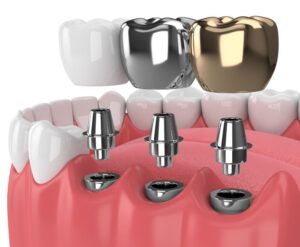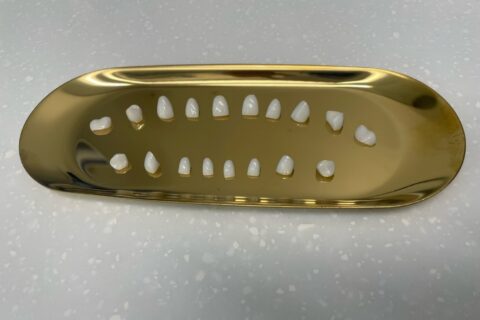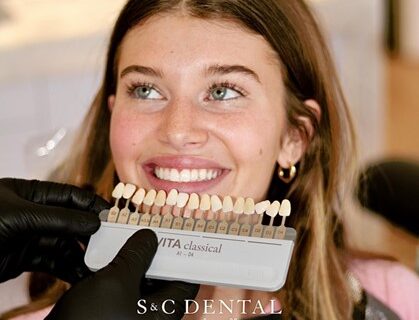Types of Dental Implants: Materials, Procedures & Best Options in Scottsdale
What are Dental Implants?
There are several types of dental implants available today, each designed to help patients in Scottsdale, Arizona restore their smiles and oral health. At S&C Dental, we specialize in providing implant solutions that look natural, last for years, and support overall health and confidence. Whether you’re missing one tooth or an entire arch, understanding the different dental implant options is the first step toward making the right decision for your long-term smile.

Who is a Candidate for Implants?
Most healthy adults are excellent candidates for dental implants. Still, success depends on careful evaluation. At S&C Dental, our team reviews oral and medical history, bone density, and gum health to ensure that an implant can fuse properly with the jawbone. Candidates should generally meet the following criteria:
- Good oral health with no untreated cavities or gum disease
- Adequate bone density and height to anchor the implant
- No uncontrolled periodontal disease or diabetes
- Healthy gum tissue capable of healing around the implant
- Do not smoke, or are willing to quit, as smoking interferes with heffaling
Patients with autoimmune disorders, bone loss, or conditions affecting healing may still qualify with preparatory procedures like bone grafting or sinus lifts. The consultation process ensures safety and predictability.
How the Implant Procedure Works
The process of getting dental implants involves several stages. While it requires patience, the outcome is worth the investment. Here’s what you can expect:
- Consultation and planning: We take X-rays or 3D scans to measure bone density and structure, then design a customized treatment plan.
- Surgical placement: The implant post is surgically inserted into the jawbone under anesthesia or sedation.
- Integration phase: The implant bonds with the bone through a natural process called osseointegration. Healing can take 3–6 months depending on health and implant material.
- Abutment placement: Once healed, a connector piece (abutment) is attached to hold the crown or bridge.
- Final restoration: A custom-made crown, bridge, or denture is placed, restoring full function and appearance.
Throughout the process, patients are provided with aftercare instructions and follow-up visits to ensure long-term success.
Common Types of Dental Implants
Understanding the most common types of dental implants helps patients make informed decisions. The three primary categories are:
- Endosteal implants: The most widely used option. Placed directly into the jawbone, they provide excellent stability and mimic natural tooth roots.
- Subperiosteal implants: Placed under the gum but above the jawbone. Often recommended when patients lack sufficient bone and prefer not to undergo grafting.
- Zygomatic implants: Anchored in the cheekbone rather than the jawbone. Used in cases of severe bone loss and performed only by highly trained specialists.
Single-Stage vs. Two-Stage Approaches
- Single stage: A longer implant is placed in one surgery with the top exposed, allowing the crown to be attached without additional surgery.
- Two stage: The implant is placed and covered with gum tissue to heal. After osseointegration, a second procedure exposes the implant for crown placement. This approach is considered the “gold standard.”
Alternative Implant Techniques
In some cases, alternative techniques may be recommended to improve outcomes:
- Immediate load (“teeth in a day”): A temporary tooth is placed the same day as surgery. This is possible only if stability and bone quality are excellent.
- Mini dental implants: Smaller implants used to stabilize dentures. They are less invasive but not ideal for heavy chewing areas.
- All-on-4 implants: Four strategically placed implants support a full arch of replacement teeth, offering a cost-effective solution for extensive tooth loss.

Types of Dental Implants: Materials Compared
Modern implants are made from durable, biocompatible materials. Each has unique advantages:
- Titanium: The gold standard. Biocompatible, integrates predictably with bone, strong, and long lasting. Most are titanium alloys for added strength.
- Zirconia: A ceramic, metal-free alternative. Preferred for patients with sensitivities, offering an aesthetic option with a one-piece design.
- Polymers: Flexible in design and appearance, though less durable than titanium or zirconia.
- Ceramics: Some ceramics are strong but can be brittle, limiting use in heavy-biting areas.
- Alternative metals: Stainless steel, gold, and cobalt-chromium resist corrosion but have lower long-term success rates than titanium.
Advantages and Disadvantages
- Endosteal: Long-lasting and stable, but requires sufficient bone.
- Subperiosteal: Useful in bone loss cases but less stable than endosteal implants.
- Zygomatic: Avoids grafting in severe bone loss but is complex and specialized.
- Titanium vs. Zirconia: Titanium has decades of clinical success; zirconia is metal-free and offers aesthetic benefits.
Recovery and Aftercare
Recovery is critical for long-term implant success. Patients should expect mild swelling and discomfort for a few days. Following our aftercare instructions—such as eating soft foods, maintaining good oral hygiene, and avoiding smoking—significantly improves healing. Regular follow-up visits allow us to monitor progress and make adjustments if needed.
Cost and Longevity in Scottsdale
The cost of dental implants in Scottsdale varies based on:
- Type of implant (endosteal, subperiosteal, zygomatic)
- Material used (titanium vs. zirconia)
- Additional procedures (bone grafting, sinus lifts, gum therapy)
Longevity: With proper care, implants can last 20+ years and often a lifetime. At S&C Dental, we tailor every plan for long-term success, ensuring that your investment provides lasting benefits.
Types of Dental Implants: Frequently Asked Questions
What is the best type of dental implant?
Endosteal implants are the most common and generally preferred when bone health allows.
Are dental implants painful?
The procedure is performed under local anesthesia and/or sedation. Most patients report manageable discomfort during recovery.
How long does the process take?
From placement to final crown, treatment can take a few weeks to several months depending on healing time and additional procedures.
How much do implants cost in Scottsdale?
Costs depend on implant type, materials, and any preparatory procedures. We provide clear estimates and review financing options during consultation.
Types of Dental Implants: Book a Consultation
At S&C Dental, we guide every patient through the best types of dental implants for their unique needs, ensuring long-term success and a confident smile. Book your consultation today and take the first step toward restoring your smile.


